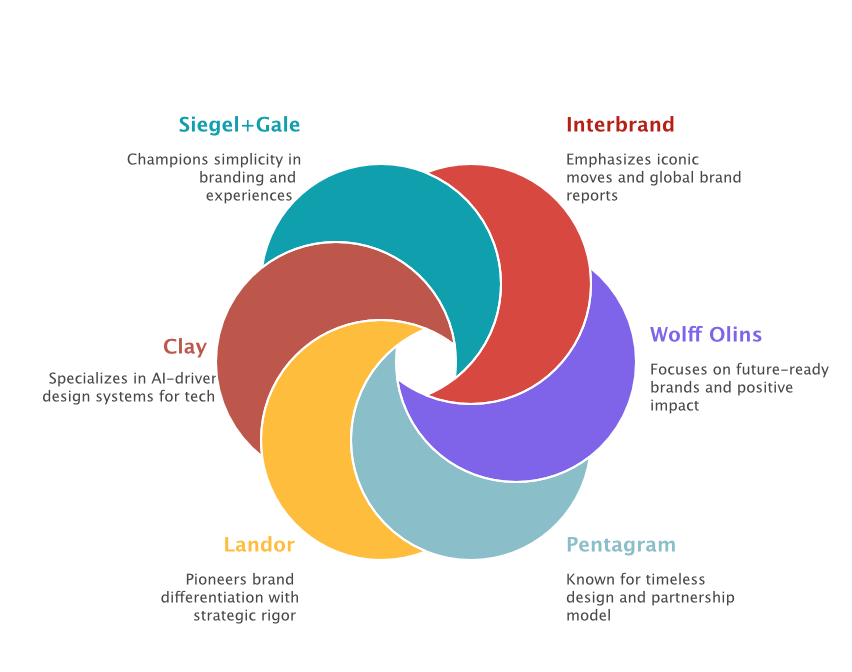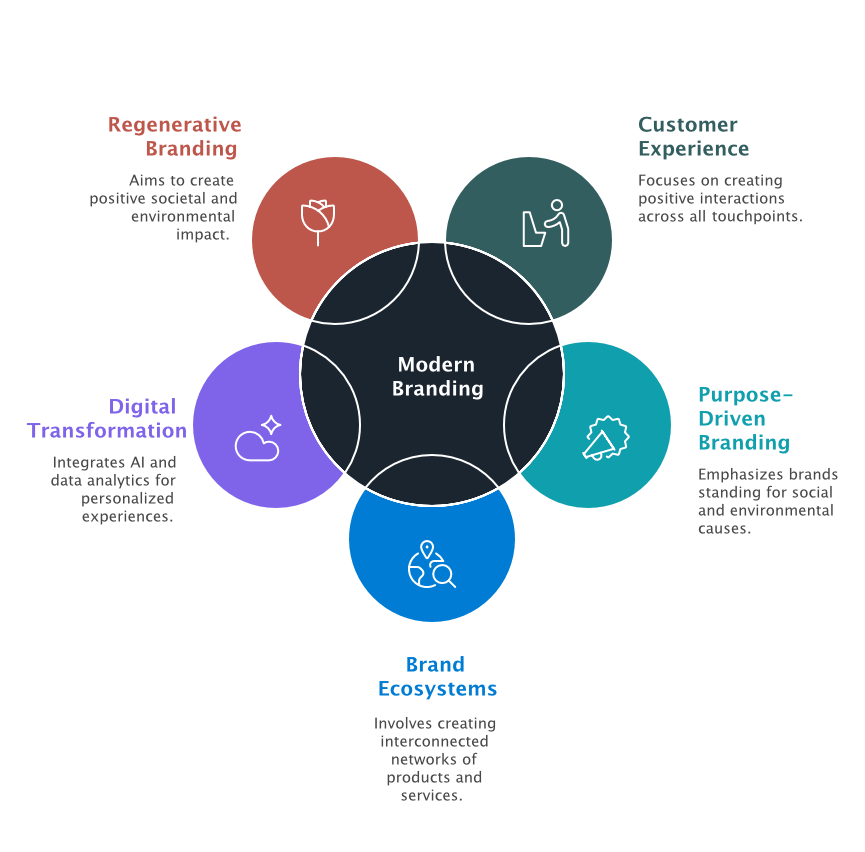
Foundational and Modern Branding Frameworks
Evolution of Branding Frameworks
From Product-Centric Promises
to Human-Centric Connections
The discipline of branding has undergone a profound transformation. It has evolved from a discipline focused on the tangible attributes of a product to a strategic practice centered on building intangible, emotional bonds. This shift reflects a broader change in the marketplace: from one where brands broadcast messages to passive consumers, to an interactive ecosystem where customers co-create meaning with brands they trust.
Understanding this journey—from foundational to modern frameworks—is essential for any business seeking to build a resilient and relevant brand today.
Leading Branding Consultancies

The evolution of branding is not about discarding the old for the new. The foundational frameworks provide the critical structural integrity—the "bones" of the brand. A clear position, a consistent identity, and a quality product remain non-negotiable.
However, these bones must now be animated by a genuine purpose and wrapped in a meaningful, human-centric experience. The most successful modern brands are those that master this integration: they have the disciplined backbone of a foundational framework, brought to life through the soul and dynamism of a modern one.
Branding Frameworks
These classic models provide the strategic bedrock for building a lasting brand. The table below summarizes some of the most influential ones.

Contemporary frameworks respond to a digitally connected, value-driven marketplace by focusing on dynamic experiences and systemic thinking.
1. From Identity to Experience:
Modern branding shifts focus from static visual identity to the totality of the customer experience across all touchpoints. Success is measured by how a brand makes customers feel at every interaction, online and offline.
2. Purpose-Driven Branding:
Consumers, especially younger generations, expect brands to stand for something beyond profit. A clearly defined purpose that addresses social or environmental issues is crucial for building deep loyalty and trust.
3. Building a Brand Ecosystem:
Leading brands no longer operate in isolation. They create interconnected ecosystems of products, services, partnerships, and communities that provide comprehensive solutions and enhance customer loyalty.
4. Integration of Digital Transformation:
The use of AI, data analytics, and immersive technologies is now essential. These tools enable hyper-personalization, where brands use data to deliver highly contextualized and tailored experiences to individual customers.
5. Regenerative and Experimental Branding:
Moving beyond mere sustainability, “regenerative branding” aims to create positive value for society and the planet. This is coupled with a culture of bold experimentation, where brands take calculated risks to innovate and offer unique experiences.
Subscribe now.
Sign up for our newsletter to get the most interesting stories of the day straight to your inbox before everyone else
ABOUT
Visual Communication Services: Empowering entrepreneurs and businesses to cultivate a cohesive and impactful brand identity that elevates their lifestyle and bottom line.
Created with ©systeme.io• Privacy policy • Terms of service


